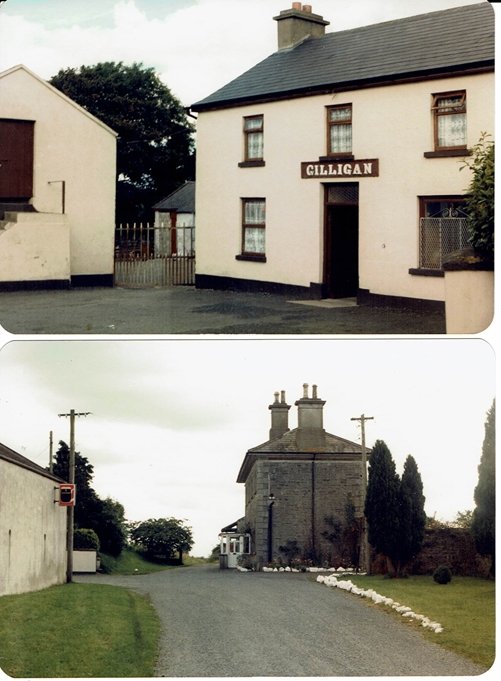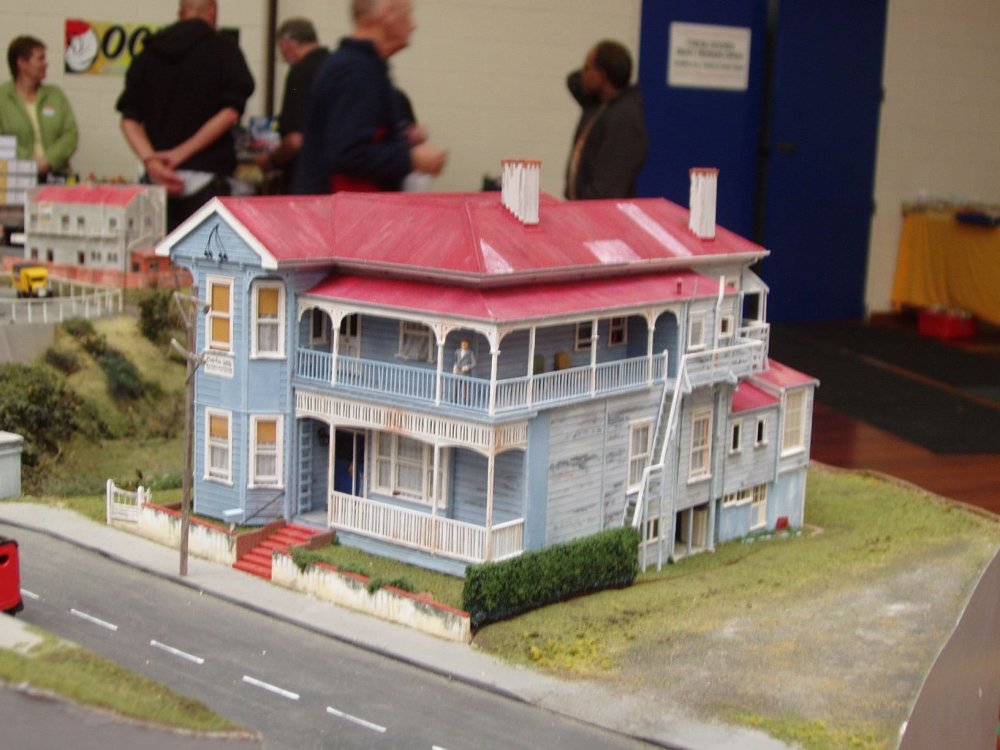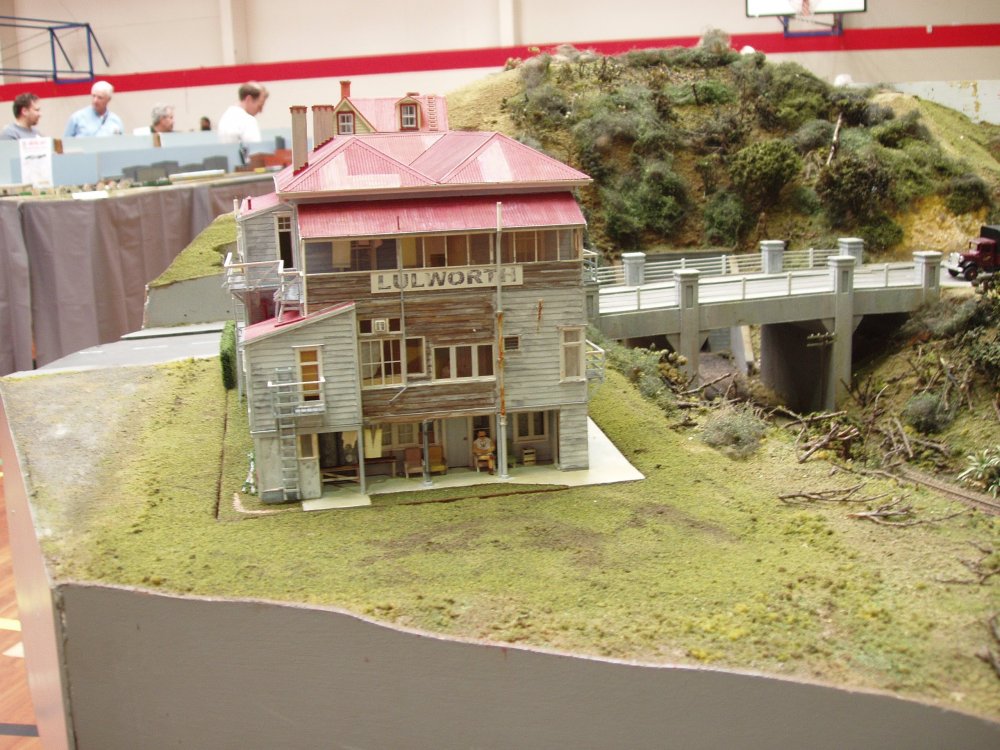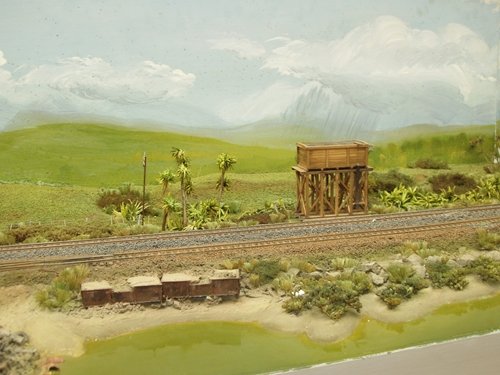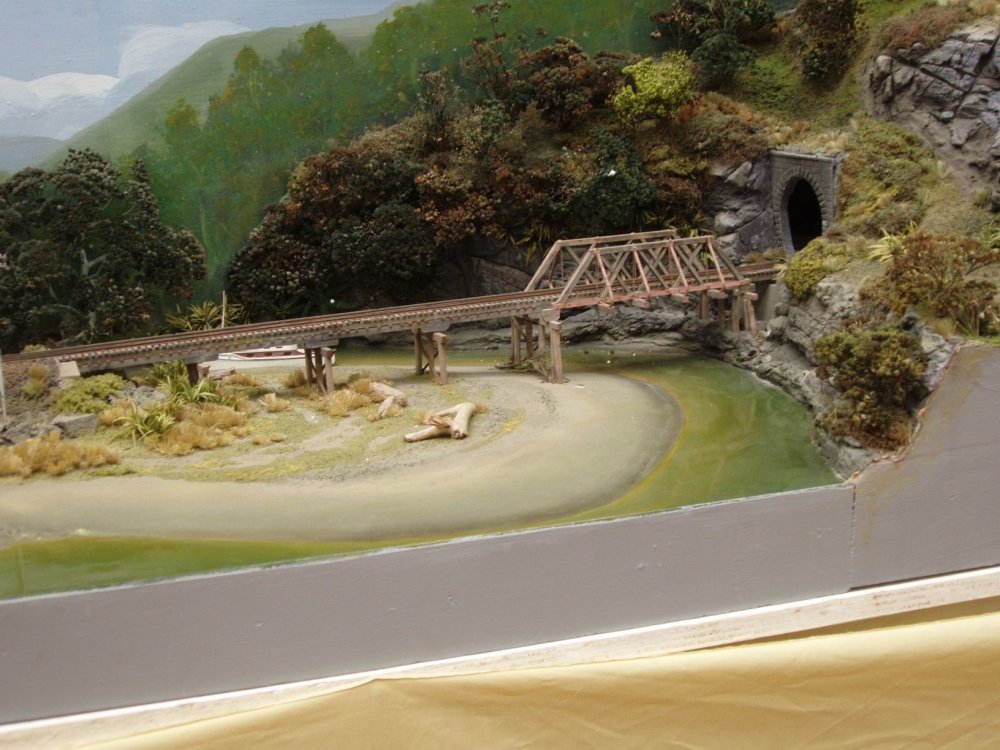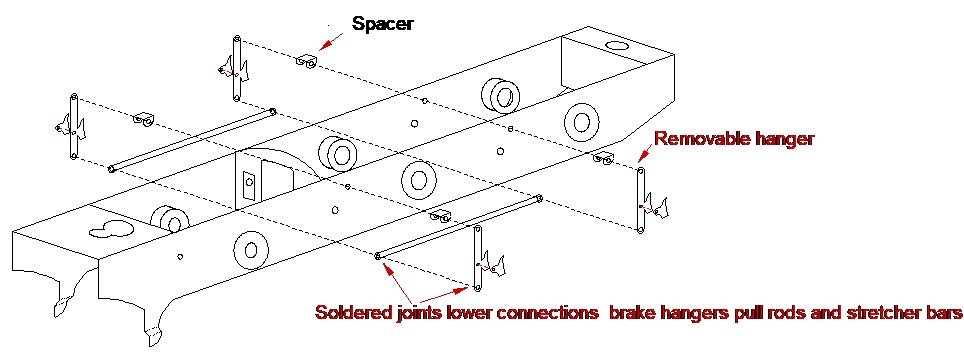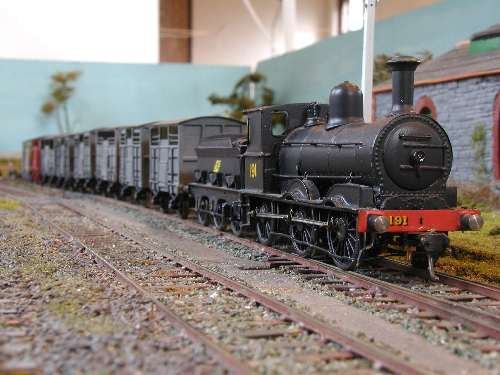-
Posts
4,858 -
Joined
-
Last visited
-
Days Won
119
Content Type
Profiles
Forums
Events
Gallery
Blogs
Store
Community Map
Everything posted by Mayner
-
We are caught in a pincer movement with the Government trying to get a return on the $1b+ of taxpayers money pumped into funding fibre networks throughout the country, the network companies trying to get us to convert to wireless or cable in order to abandon its copper networks. Broadband is reasonable we don't use our monthly quota, we try to minimise our 9 year old daughters "screen time" IT exposure, we hate to throw anything out so analogue TVs hooked up to Freeview digital receivers, wife records kids TV programmes and wierd continental movies and gets huge enjoyment trying to manager her ever growing collection of recordings on different media. Personally I prefer to just play trains
-
We are being constantly being bombarded with apparently mouth watering offers to transfer from copper to fiber or wireless. The ulterior motive is that our telephone network providers want to abandon its legacy copper based systems Being Luddites our existing plan is more than sufficient for our needs and we want to retain a copper land line for international phone calls or as a back up in an emergency especially if wireless networks are off line as a result of power cuts or natural disaster
-
I have ran out of castings for the handbrake wheels, but no shortage of end castings. It might be worth e-mailing enquiries@dartcastings.co.uk as they may have a stock of handbrake castings in search of a potential market. The MGWR van parts including axleboxes, springs, roof vents, handbrake wheels and end castings were likely to be cast from the same mould
-
Great selection of layouts, interesting to see several models of the Woodhead Route.
-
Gilligan's at Ballywillan on the MGWR Cavan Branch pretty much in the middle of nowhere like most intermediate stations on the branch. The station had a long cattle bank served by a loop opposite the station building, the goods yard and shed was further up the bohereen past the station. Possibly Gilligan's got some business in connection with cattle and general goods traffic (bacon?) or more likely a refuge for passengers on the up Night Mail while the train shunted the yard, passenger traffic was not exactly high priority on the Midland. Some examples of urban and rural modelling New Zealand style Typical hotel/guest house run down part of town Ministry of Works standard concrete bridge in the background. "One Trak Minds" modular group riverside scene cabbage trees, flax and bird life, old open wagons dumped into river to prevent scouring. Typical river crossing using standard NZR timber bridge components. This form of construction was still common on secondary lines until recent years.
-
I visited my 1st exhibition in about two years today one of the most striking things was the contrast between the realistic modelling of scenery (sometimes animals!) buildings and structures on models of New Zealand prototypes compared with an almost generic standard of scenic modelling on British models. On club "layout" was quite novel incorporating separate NZR and British Rail layouts on a common baseboard. The contrast was interesting everything was either scratch or kit built on the NZR side and everything fresh out of the box rtr on the BR side. The NZR side was bascially completed to a high standard while the British Modelers had completed tracklaying and wiring but had not started the scenic work. Most Irish layouts with a few notable exceptions tend to be indistinct in their scenery, buildings and structures and could be anywhere in the UK with the possible exception of Ireland. Has anyone thought about modelling the distinct regional variety between different parts of Ireland such as the GNR, County Down, C&L & SLNCR Drumlin Country of County Down and the Border & Midlands Region, the MGWR & GNR branch lines ines in the rich lands wooded lands of County Meath with their ancient monuments. The MGWR main line & GSWR Athlone Branch a caravan trail across the bog of Allen. The GSWR in the fertile river valleys of Munster. The GSWR on its dramatic traverse of the hill country between the Blackwater and Lee valleys with its dramatic viaducts and steep gradients and oddly placed Rathpeacon marshalling yard The Fuscia lined West Cork branches and small harbours. The Government Extension lines through the wildest most uninhabited parts of Connemara, Mayo & Donegal? I tried to capture some of the atmosphere of the ridge of the Arigna mountains and the Lough Allen area in my Keadue narrow gauge layout. Thought are divided between open stone wall country of central Mayo-Roscommon or the Drumlin Country of Cavan with its hills and lakes for a 4mm broad gauge layout. Anyone have similar ideas or aspirations?
-
I made a couple of display cases using ripped down shelving material with doors and shelves from a local galzing merchant, we managed between us to double up on the overlap for the sliding doors. We also picked up a very nice hardwood display case on a local on-line auction site. The only remotely challenging bit was routing the panels for the sliding doors with a very cheap plunge router.
-
IFM have an on-line store linked to their Facebook page. https://www.facebook.com/Irish-Freight-Models-1252098201500518/app/251458316228/?ref=page_internal Silver fox list the Open Standard and Buffet Car bodies my be vinyl or printed plastic of the Dapol body shell rather than a resin casting, roofs, gangways and ends appear to be pure Dapol. http://silverfoxmodels.co.uk/ir-ie-buffet-car/
-
I normally assemble the brake gear as a removable sub assembly, so that I can assemble the wheel sets, test and paint a loco before final assembly. Basically I solder all the lower connections between brake rods, hangers and stretchers but leave the top connections free so that I can remove the gear. I omitted the inner pull rods on 191 and installed a central rull rod to strengthen the whole assembly as the brake gear is practically invisible beneath the loco in 4mm.
-
Silver Fox have a reputation of producing reasonably well finished but not particularly accurate models of Irish locos and stock. The Silver Fox "Laminates" appear to be based on "Bredin" coaches built by CIE in the early 1950s (using traditional coach building techniques) rather than the Laminate Coaches built in the late 1950s, Laminates has been used as a catch all description by some enthusiasts for CIE coaches built during the 1950s although there are significant differences in construction and visual appearance between CIE Bredin & Laminate Stock. The coaches appear to be based on the Dapol Stanier 60' coach most likely using a cast resin body in conjunction with Dapol bogies, underframe and roof and may be shorter and narrower than scale. The traditional steel underframe and LMS/GSR style bogies are reasonably correct for coaches built up to 1953-4, most of these early coaches were relegated to suburban use/withdrawn by 1982-3. These coaches ran in mixed rakes with other stock including Craven, Park Royal and Laminate Coaches The Silver Fox Laminates are probably a reasonable layout coach, but may not compare with kit and rtr Irish coaches by other manufacturers. Irish Freight Models produce Laminate & Park Royal Coaches in kit and RTR form
-
There is a great story in an IRRS Journal from the mid-70s of the driver of the GNR Enterprise becoming locked in the toilet compartment of a new BUT railcar on Kellystown Bank between Dundalk & Drogheda. The driver placed his bag or a brake block on the "deadmans pedal" and left the cab to answer the call of nature while the train was travelling at line speed.. Meanwhile a passenger managed to jam the lock on the toilet door, luckily the driver had a screwdriver in his jacket pocket and returned to his cab in time to avoid wrecking the train or having to explain his actions to management or the irish Railway Inspector
-
Brian Fennell a member of the MRSI Loughrea group scratchbuilt a rake of 15-20 mainly GSWR cattle wagons about 20 years ago. Provincial Models produce a nice model of the standard IRCH cattle wagon used by the GNR & SLNCR, no one produces a kit or rtr KN
-

Boyne Road, Drogheda, Old Cement Factory
Mayner replied to dave182's topic in Photos & Videos of the Prototype
The Cement Factory Branch opened in the 1930s up to the mid 60s most of the traffic went out in wooden bodied GNR vans or CIE H Vans. In the 1950s the GNR acquired a small number (12?) of bulk cement wagons for traffic to the Athy asbestos factory, these wagons were similar in general appearance to the then standard British Railways plywood bodied van but with an all steel body with the bottom section formed into a hopper. The GNR bulk cement wagons ran singally or in cuts of wagons in ordinary goods trains rather than the block or unit train workings of more modern cement wagons Platin came on line in the early 70s. The cement factory branch would make an interesting model in its own right, with a number of sidings serving separate industries including a factory and the oil terminal in addition to the cement factory. The oil terminal came on line in the mid 1960s to handle block oil trains from Foynes. The terminal could also receive oil sea and continued in use for oil traffic to Platin until the plant converted to oil burning in the late 1980s -

Narrow Gauge in the Rockies not quite
Mayner replied to Mayner's topic in US / Canadian Railway Modelling
I finally got around to ballasting the main line through Utah Junction following the track re-lay. Ballasting is basically a much more expensive scaled up version of small scale loose ballasting techniques using screened stone chips and 50% diluted concrete bonding agent. Glue applied using a large syringe and a length of clear plastic tube rather than an eyedropper . Waiting for some rain to wash away the stone dust from the rails and sleepers. Big improvement in overall experience , though I need to build up the ground around the water tower. There is a noticeable bump/change of level in the main running line opposite the water tower where I replaced a decayed section of decking/track support. I improved cross levels on a section of the main line in this area where the cross levels were badly off leading to excessive swaying and pitching as trains ran through at not quite speed. The area in the background has started to revert to bush https://en.wikipedia.org/wiki/The_bush with self seeding shrubs and trees (including a Tasmanian Blackwood and a Sweet Gum) in the 10 years since a large gum tree in this area fell over fortunately not landing on the railway. The pencil pines by the water tower were planted about 5 years ago to provide more "scale" foliage, in the foreground a dwarf box hedge is taking over the area between the edge of baseboard and main line. -
Another year older few if any of last years un-finished projects completed here we go again. GSWR coach painted, interiors to be fitted, decals, glazing and couplings still to be fitted. Brake 3rd hole above the ducket is for one of the side lamps. I like a mixture of open and closed droplights. 4 Compt 1st a lot more legroom and seating with armrests. I still have to finish installing pick ups on the J26, paint the loco and decide on lettering or a numberplate. The interior is not a pretty sight at this stage, not happy with the results from brush painting the partitions, will replace when I get my hands on some Evergreen planked styrene.
-
I think it was more a case of the cost and availability of land. A railway company would leave itself open to a lot of political pressure and potentially loose a lot of money if its stations were incapable of handling the traffic generated by a cattle fair or other peak seasonal traffic like fish or fresh produce. The Government funded railways (Baltimore, Valencia) tended to be a horse of an other colour with scrimping on construction and facilities compared to privately built lines. Galway and Harcourt Street stations were on relatively short but wide sites with station, goods yard and loco sheds in close proximity, while relatively small stations like Athenry and Loughrea spread out over the best part of a mile. Galway had/has the advantage of a loop that extends almost out to Renmore which allowed the station to handle long passenger and goods trains. While the Loughrea mixed passenger train usually loaded to 3w wheel coaches and half a dozen wagons, the station was capable of dispatching over 100 Cattle wagons in 4-5 specials during the big autumn cattle fairs. The average mixed on the Valencia line appears to have loaded to a couple of 6w coaches and 18-20 wagons. On the narrow gauge the C&L coal trains appear to have loaded to 10 wagons and a brake, on Keadue 5 wagons and a brake appears to reasonably With selective compression in 4mm 10-15 wagons appears to be a reasonable length of goods train.
-
Finding a home for the loco shed has been a problem since the day I bought it many years ago. It did not work in on the last N gauge layout so kind of now or never for the N gauge. https://www.youtube.com/watch?v=WasCaeonY_s&feature=youtu.be I finished (most of) the wiring on the staging, industries yard board and surprise myself by running some trains to test that the layout is workable. Baldwin RF16 "Sharknose" diesels 1205 & 1216 picking up a cut of boxcars from the paper-mill. Rather like the Irish Rail MK2AC coaches the D&H acquired the sharks from a scrap dealer for an equivalent amount of scrap metal (boxcars). I have cut an opening in the baseboard for a river/stream to add a bit of visual interest and use up a Micro-Engineering bridge kit. I was playing with the AF feature of the camera with an aperture of f25 on a tripod to try and get a decent depth of field(difficult in N) The building behind the locos is a silo for storing household coal common in the North East and other parts of the US & Canada that have hard winters. A paper mill is a no-brainer as a lineside industry on the D&H. Shorter exposure moving train. The layout is similar in concept to Castlerackrent with an industry to add operating interest and act as a view blocker to the staging/fiddle yard. The Sharks leaving Port James on a local freight. The dilemma at this stage is whether to keep the layout as an Office Display piece or keep it in the garage and expand it into a large continuous run Class 1 layout (so I can run my collection of American diesels.) and once again let the Irish 21mm layout take a back seat. Mill/staging baseboard. Control is DCC (Digitrax DB150 command stations with radio throttles) the layout is divided into 3 power districts protected by Powershield PX1 digital circuit breakers (circuit board in left center), the circuit breakers both simplify fault finding and appear to have prolonged the lift of the command stations. Seep point motors connected to Lenz stationary decoders. Power feed to be wired in for pointwork and stationary decoders to be connected to circuit breakers. Trackwork, point motors, electronic components have all been salvaged from a layout started in Ireland about 20 years ago. Trackwork is Peco Code 55 with Electro frog points, I initially wired the points using the built-in switches to control frog/crossing changeover but have since installed sub-miniature micro switches and as relying on the combination of blade contact and built in pointmotor switches lead to intermittent contact & un-reliable slow running.
-
Nice to see the MGWR van assembled with the alternative doors! I will post you a set of end castings & handbrake wheels. I haven't heard back from Dart Castings on whether they have these particular castings in stock. The amount of tarnish is a bit odd on a fret straight from the engravers, possibly rushing with pre-Christmas orders. Those 6 compt GSWR 3rds did not exactly have a lot of leg room, most were withdrawn/converted to turf-wagons during the Emergency.
-

CIE Laminate Coaches - Worsley Works - ECMbuild in 4mm
Mayner replied to murrayec's topic in Irish Models
The Worsley Works Laminate Brake Standard is based on the 1909-1913? series built in 1959. -
Interesting exercise which basically demonstrates that a small country terminus or through station requires a similar space lengthwise to a large terminus or junction station. Makes sense though on a railway system that was set up to handle 50-60 wagon goods trains and 20-30 wagon goods trains were not exactly un-known on country branchlines. It will be interesting to see how your North Wall scheme works out.
-

Historic Linespeeds on Irish railways.
Mayner replied to hexagon789's question in Questions & Answers
I don't know if there are verified 90+ mph timings for members of the 800 Class or other Irish steam locos. Irish steam records are mainly based on stopwatch recordings of runs by journalists and enthusiast "timers". In the steam era there was little need for high speed running in the absence of competing routes apart from Belfast-Londonderry and Belfast-Newcastle, in the South average train speeds were scheduled with relatively low 42.3mph Kingsbridge-Cork, 26.9 mph Kingsbridge Waterford, 33.6mph Broadstone-Galway. The most important trains were the cross-Channel Mails which were heavily loaded and called at all the principal stations, the ordinary all-stations passenger trains were even slower. The Irish steam record is held by a 1934 non-stop Dublin-Cork special (for the newly appointed American Ambassador) with a recorded average speed of 85.6 mph between Ballybrophy and Portlaoise. 402 may have reached or exceeded 90 at some stage between the two stations. Cecil J. Allen a British railway journalist appears to have been invited by the GSR to record the run. average speed exceeded 70mph between Limerick Junction and Kingsbridge. The loco was 402 a 2 cylinder 4-6-0 driven by Mark Foley with 3 coaches (95 tons gross). 402 was considered to be the best of the rebuilt 400 Class similar in capability to a GWR Saint or Southern King Arthur. 800 is reported to have achieved 92mph during a demonstration run in July 1939 There is a log of a run of 800 on an up Cork Mail between Portlaoise and Kingsbridge in Aug 1939 with 450 Tons in O.S. Nocks Irish Steam with a maximum recorded speed of 76.5 mph at Hazlehatch. O S Nock was particularly impressed with 800s acceleration on the climb out of Cork but the crew ran into problems with a sticking regulator valve near the top of the bank out of Cork and a patch of poor quality coal during the middle of the journey. A number of 001 Class were uprated to 1650hp this was to ensure that certain trains including Heuston-Tralee passenger trains could keep time within the existing line limits of 70mph on the Dublin-Cork line and 60mph Mallow-Tralee lines. -

Narrow Gauge in the Rockies not quite
Mayner replied to Mayner's topic in US / Canadian Railway Modelling
I guess its the greater mass but large scale locos and stock tend to be more fragile than OO or N. I had to re-build the pilot beam of 348 after she fell from a raised section of line about 7-8 months ago. -
More or less finished tracklaying & power-bus wiring on the new layout. Remaining tasks to commission DCC control system include installing accessory decoders to control pointwork, Loconet cables and Digitrax UR91 radio receivers General view Fort/Port James? or main line section of layout. SD45s are on RW6 "The Paper Train" a high priority freight that conveyed newsprint from Canadian & on-line paper mills to the major Eastern US Cities. A pair of RS3 switchers & an RS11 wait their next assignment at the roundhouse while Baldwin Sharks 1205 & 1216 are working a local freight. This section of baseboard will have a curved MDF fascia profiled to match the ground contours and the backscene will be formed in a similar manner with a painted backdrop of the Adirondack mountains. H9N will run along the front of the layout past the foreground buildings before crossing the railroad with a 1930s concrete overpass. I originally intended to use low relief industrial and commercial buildings in the background, but have decided on a combination of steeply sloping tree covered hills and rockfaces in the background, I will probably trim the loco shed back into a semi-low relief structure. General view looking South. The backscene will follow the line of the foam track underlay, loco shed will be trimmed back to fit. Turntable is Peco, Spur tracks at the south end of the yard will be used mainly to store empty box cars for paper traffic from the local paper mills, ore cars/hoppers for traffic in connection with iron ore traffic. General view looking North. Foreground buildings Depot parking lot? A more open foreground may work better visually and be a lot less work than detailing all those buildings. I will probably replace the depot with one based on an actual depot on the actual line.
-

Narrow Gauge in the Rockies not quite
Mayner replied to Mayner's topic in US / Canadian Railway Modelling
Oops!!!!!!!!!!!!!!!! Classical mishap while turning 348 yesterday just as 464 was waiting to be flagged into the yard. 348 just rolled forward as she was being turned, luckily she did not roll the other way and fall onto the floor. -
A Civil Engineer once told me a 150 year old retaining wall would not "stand up" on paper. To a large degree the slope angle depends on whether you are forming a cutting or an embankment. Depending on ground conditions cuttings may have steeper slopes than embankments formed from fill material.
.png.c363cdf5c3fb7955cd92a55eb6dbbae0.png)


